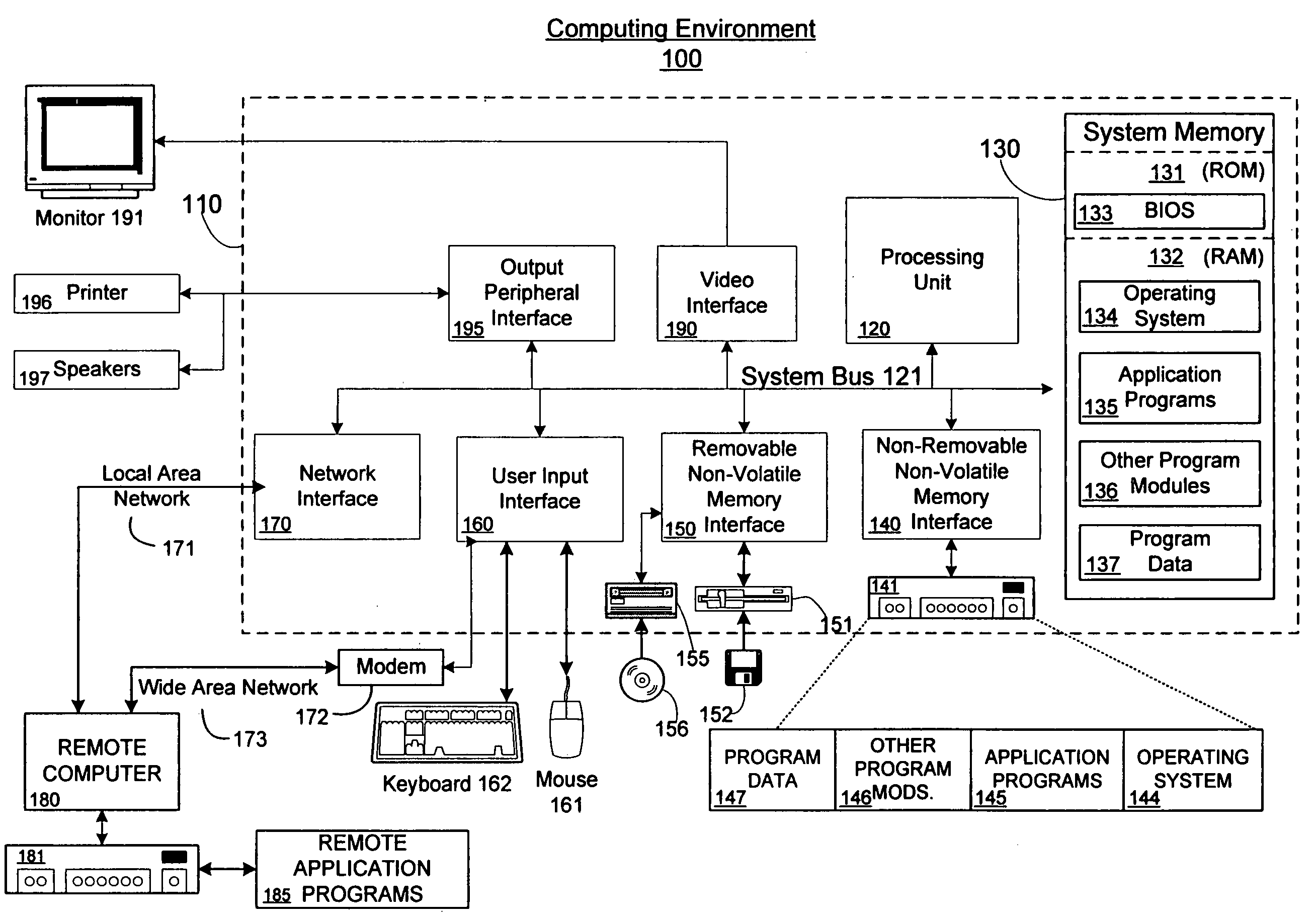Indexing XML datatype content system and method
a content system and data type technology, applied in the field of software querying over data sources, can solve the problems of inefficient search of difficult search of that database, and inability to search the large objects in the xml coded information of the relational databas
- Summary
- Abstract
- Description
- Claims
- Application Information
AI Technical Summary
Problems solved by technology
Method used
Image
Examples
Embodiment Construction
Overview
[0012]Queries on XML data may be time consuming because XML data may be voluminous and parsing the XML data during each query execution may waste processing time by repeated effort. XML data may be present in one or more stand alone XML files. Alternately, XML data may be stored in a database, such as a relational database. A relational database table can have one or more XML columns that may be untyped or typed according to a one or more XML schemas. The XML values populating these columns may be stored as binary large objects (BLOBS) for easier retrieval. But even in this convenient format, queries on the binary large objects may be slow.
[0013]In accordance with aspects of the invention, the results of parsing the binary large objects may be saved and future queries may use the results and run significantly faster. To set up queries that can be run on the parsed form of binary large objects, XML data is shredded into its basic components, termed XML nodes, and those compon...
PUM
 Login to View More
Login to View More Abstract
Description
Claims
Application Information
 Login to View More
Login to View More - R&D
- Intellectual Property
- Life Sciences
- Materials
- Tech Scout
- Unparalleled Data Quality
- Higher Quality Content
- 60% Fewer Hallucinations
Browse by: Latest US Patents, China's latest patents, Technical Efficacy Thesaurus, Application Domain, Technology Topic, Popular Technical Reports.
© 2025 PatSnap. All rights reserved.Legal|Privacy policy|Modern Slavery Act Transparency Statement|Sitemap|About US| Contact US: help@patsnap.com



